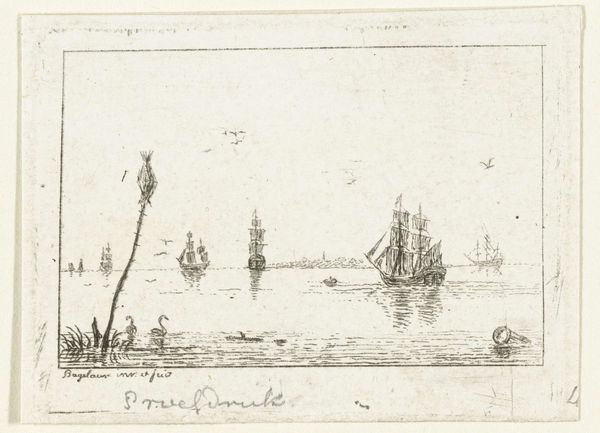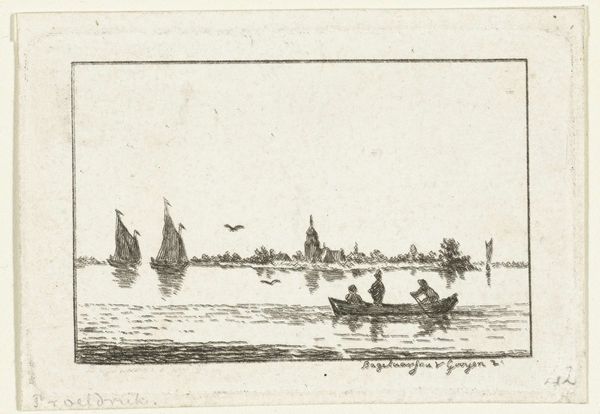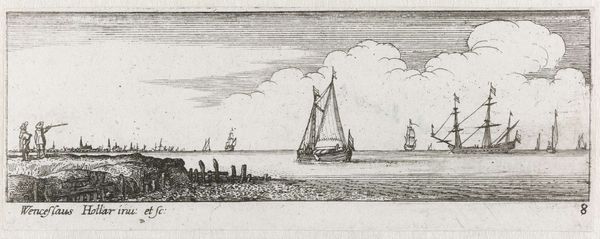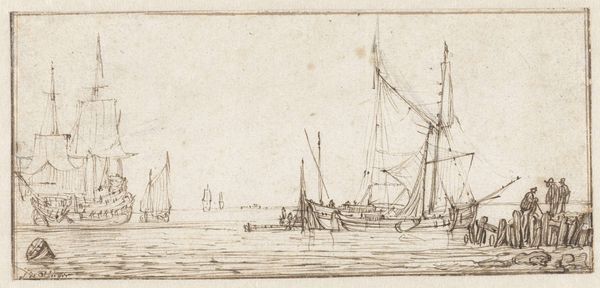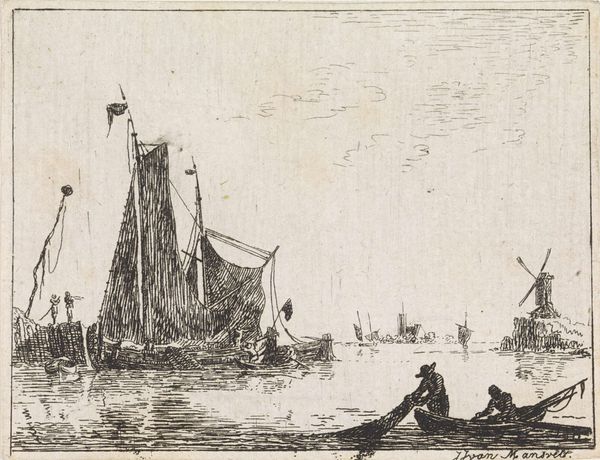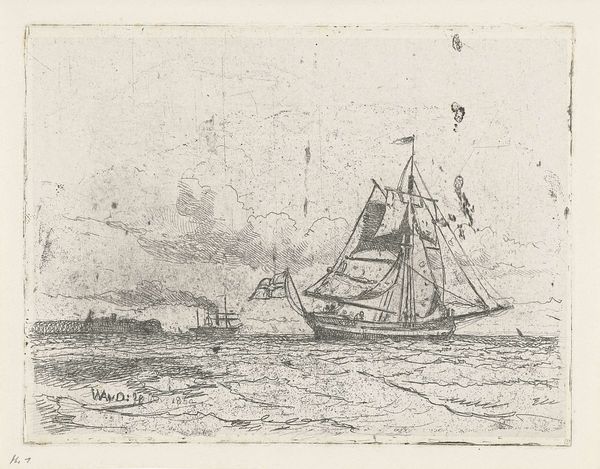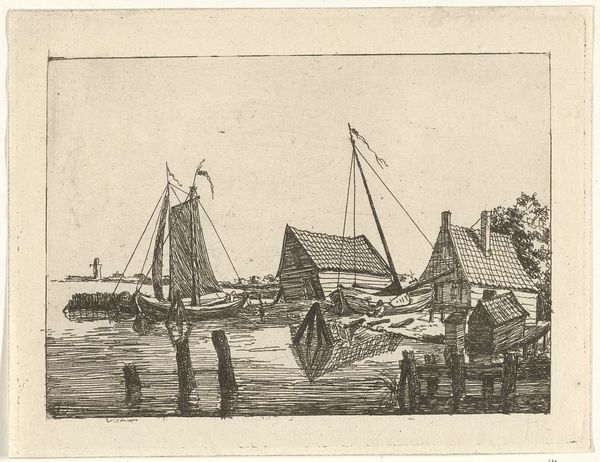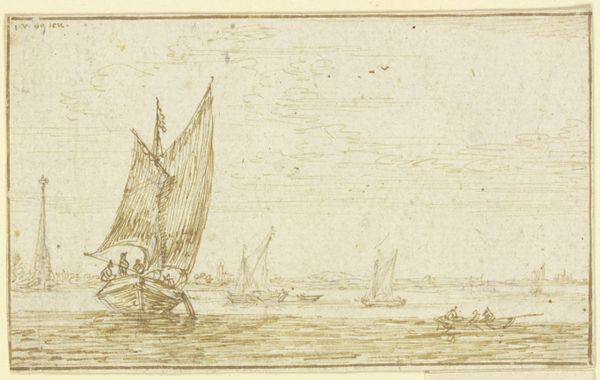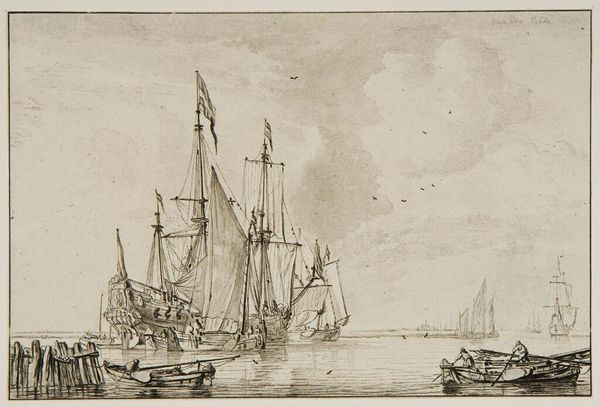
drawing, print, paper, ink, engraving
#
drawing
# print
#
pen sketch
#
landscape
#
figuration
#
paper
#
ink
#
romanticism
#
line
#
cityscape
#
engraving
#
realism
Dimensions: height 52 mm, width 71 mm
Copyright: Rijks Museum: Open Domain
Curator: This is "Waterlandschap met zeilschip," or "Waterscape with Sailing Ship," an engraving and print made between 1798 and 1837 by Ernst Willem Jan Bagelaar. Editor: My first thought is that it feels so precarious, doesn't it? The thin lines, the barely-there rendering of the water. It really captures a sense of fragility. Curator: Indeed. Bagelaar was working in a period of immense political and economic upheaval in the Netherlands. Consider how the Batavian Republic, a revolutionary government influenced by France, came and went during his career. This constant change impacted artistic production, as artists sought new ways to express national identity amidst instability. Editor: Absolutely. Looking at the materiality of printmaking here, there’s a real labor involved. Engraving is a painstaking process. The very act of creating these tiny lines would have been a meditation, a way of focusing on the details of a world that felt like it was spinning out of control. Curator: I see your point. Also, notice the contrast between the stillness of the cityscape in the background and the active sailship. It seems Bagelaar aimed to portray the maritime power and hustle within the Romantic landscape genre. Editor: It's all about tension, I think. The tension between labor and leisure, land and water, control and chaos. Even the paper itself, this delicate ground for such a weighty subject... It’s beautiful, in its own quietly unsettling way. It speaks volumes about the artist and the consumer market. Curator: In closing, Bagelaar provides insight into how social structures intersect to reflect life in a transformative period. The politics are within the landscape, both delicate and determined. Editor: And for me, it's a potent reminder of how artists wrestle with the materials at hand to make sense of, and shape, a changing world. A perfect commingling.
Comments
No comments
Be the first to comment and join the conversation on the ultimate creative platform.

